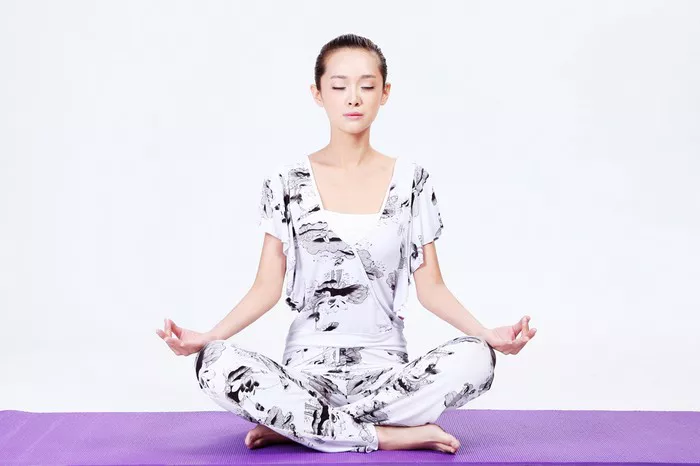The Hatha Yoga Pradipika is one of the oldest and most influential texts in the practice of Hatha Yoga, written by the sage Swatmarama in the 15th century. It serves as a comprehensive manual on the physical practices of yoga, with a special emphasis on the power and potential of pranayama (breath control). The Hatha Yoga Pradipika explains that pranayama is not just a breathing technique, but an essential tool for purifying the body and mind, facilitating the flow of prana (life force), and leading the practitioner toward spiritual enlightenment.
In this article, we will explore the role of pranayama in the Hatha Yoga Pradipika by examining its origins, techniques, and benefits. We will delve into the different types of pranayama described in the text and understand their purpose in a holistic Hatha Yoga practice. This deep dive into pranayama will help practitioners better appreciate how control of the breath plays a central role in achieving physical, mental, and spiritual well-being.
1. The Hatha Yoga Pradipika: An Overview
1.1 The Origins of Hatha Yoga
Hatha Yoga, meaning the “yoga of force” or the “yoga of willful discipline,” is a system of physical practices that emerged in medieval India. The Hatha Yoga Pradipika, along with two other texts—Gheranda Samhita and Shiva Samhita—form the foundational texts of this tradition.
Unlike earlier yogic traditions, which focused on purely meditative practices, Hatha Yoga emphasizes the importance of physical purification to prepare the body and mind for meditation. The word “hatha” is derived from two Sanskrit syllables: “ha” representing the sun, and “tha” representing the moon. This signifies the balancing of opposing forces within the body—masculine and feminine, heat and coolness, effort and relaxation.
1.2 The Four Chapters of Hatha Yoga Pradipika
The Hatha Yoga Pradipika is divided into four chapters, each addressing a different aspect of the practice:
Asanas (Postures): Describes physical postures that purify the body and prepare it for pranayama and meditation.
Pranayama (Breath Control): Focuses on techniques for controlling the breath and prana.
Mudras and Bandhas (Seals and Locks): Techniques that direct and conserve prana within the body.
Samadhi (Meditative Absorption): Explores the ultimate goal of yoga—union with the divine.
Pranayama is introduced in the second chapter, but it is closely linked to all other aspects of the text, as it harmonizes the body, mind, and spirit.
2. Understanding Pranayama
2.1 What Is Pranayama?
Pranayama is composed of two Sanskrit words: prana, meaning life force or vital energy, and ayama, meaning control or extension. Together, pranayama refers to the controlled regulation of breath to direct and expand the flow of prana throughout the body.
In the Hatha Yoga Pradipika, pranayama is described as a method to purify the nadis (energy channels) and balance the body’s energy systems, thereby allowing the practitioner to enter deeper states of meditation.
2.2 The Purpose of Pranayama in Hatha Yoga
Pranayama is not just a preparatory step in Hatha Yoga—it is the gateway to higher consciousness. In the Hatha Yoga Pradipika, Swatmarama emphasizes that without the purification of the nadis and the regulation of prana, meditation and spiritual awakening are impossible.
The practice of pranayama has several key objectives:
Purification: Pranayama cleanses the energy channels and organs, preparing the body for advanced yogic practices.
Balancing Prana: It regulates the flow of prana between the solar (pingala) and lunar (ida) nadis, bringing balance to the practitioner’s physical and mental states.
Awakening Kundalini: Pranayama activates dormant energy within the body, particularly the kundalini energy located at the base of the spine, which is key to spiritual awakening.
Calming the Mind: Controlled breathing helps quiet the mind, eliminating distractions and preparing the practitioner for meditation.
3. The Role of Pranayama in the Eight Limbs of Yoga
Although the Hatha Yoga Pradipika focuses on the physical practices of Hatha Yoga, it is deeply connected to Patanjali’s Ashtanga Yoga or the eight-limbed path described in the Yoga Sutras. Pranayama is the fourth limb of yoga in this system, following yama (moral restraints), niyama (self-discipline), and asana (physical postures).
Swatmarama acknowledges the importance of pranayama as a bridge between the physical and the spiritual. Through pranayama, the practitioner moves from the external practice of asanas to the internal practices of pratyahara (withdrawal of the senses), dharana (concentration), and dhyana (meditation), eventually reaching samadhi (enlightenment).
See also: Exploring Pranayama in the Patanjali Yoga Sutras
4. The Types of Pranayama in Hatha Yoga Pradipika
4.1 Nadi Shodhana Pranayama (Alternate Nostril Breathing)
One of the most important pranayama techniques described in the Hatha Yoga Pradipik a is Nadi Shodhana, or alternate nostril breathing. This practice involves breathing in through one nostril while closing the other, then exhaling through the opposite nostril, alternating in a rhythmic pattern.
The purpose of Nadi Shodhana is to purify the nadis, ensuring the free flow of prana through the energy channels. It also balances the ida (moon) and pingala (sun) nadis, creating harmony between the sympathetic and parasympathetic nervous systems. Regular practice of Nadi Shodhana leads to mental clarity, emotional stability, and enhanced focus.
4.2 Ujjayi Pranayama (Ocean Breath)
Ujjayi Pranayama, also known as “victorious breath” or “ocean breath,” is a technique in which the practitioner breathes deeply while slightly constricting the throat, creating a gentle sound reminiscent of ocean waves. Ujjayi is performed both during asanas and in a seated position for meditation.
This pranayama helps increase oxygenation, calm the mind, and build internal heat. Ujjayi is often used to cultivate focus during yoga practice and to extend the duration of breath retention.
4.3 Kapalabhati Pranayama (Skull Shining Breath)
Kapalabhati, or skull-shining breath, is a vigorous breathing technique in which the practitioner exhales forcefully through the nose while engaging the abdominal muscles. Inhalations are passive and happen naturally between each exhale.
Kapalabhati is used for detoxification, energizing the body, and improving digestive health. It also strengthens the respiratory muscles and clears out stale air from the lungs. In the Hatha Yoga Pradipika, Kapalabhati is considered one of the six purification techniques (shatkarma) that prepare the body for deeper pranayama practices.
4.4 Bhastrika Pranayama (Bellows Breath)
Bhastrika Pranayama, or bellows breath, involves rapid, forceful inhalations and exhalations. This technique builds heat in the body, stimulates the digestive fire (agni), and clears energy blockages.
In the Hatha Yoga Pradipika, Bhastrika is prescribed to increase vitality, purify the nadis, and awaken kundalini energy. However, it is a powerful technique that should be practiced with caution and under the guidance of a skilled teacher.
4.5 Sitali and Sitkari Pranayama (Cooling Breath Techniques)
Sitali and Sitkari are cooling pranayama techniques that are especially useful in hot climates or after vigorous yoga practice. In Sitali, the practitioner inhales through a curled tongue, while in Sitkari, the inhalation is done through the teeth with a slight hissing sound.
Both techniques cool the body, soothe the nervous system, and calm the mind. They are beneficial for balancing internal heat and preventing conditions such as overheating or inflammation.
5. The Six Purification Techniques (Shatkarma) and Their Role in Pranayama
Before engaging in advanced pranayama, the Hatha Yoga Pradipika advises practitioners to undergo six purification techniques, known as shatkarma. These practices cleanse the body’s internal organs and energy channels, making pranayama more effective. The six shatkarmas are:
Dhauti: Cleansing of the digestive system.
Basti: Yogic enema for cleansing the intestines.
Neti: Nasal cleansing.
Trataka: Steady gazing to cleanse the eyes and improve concentration.
Nauli: Abdominal churning to strengthen digestion.
Kapalabhati: Skull-shining breath for detoxification.
These purification techniques remove physical and energetic obstacles, allowing prana to flow freely and facilitating deeper pranayama practices.
6. The Benefits of Pranayama in the Hatha Yoga Tradition
6.1 Physical Benefits
Improved Lung Capacity: Pranayama strengthens the respiratory system, increasing lung capacity and oxygen intake.
Detoxification: It helps eliminate toxins from the body by stimulating the digestive system and improving circulation.
Balanced Energy: By regulating the breath, pranayama balances prana, creating harmony between the body’s energy systems.
6.2 Mental and Emotional Benefits
Calm and Focused Mind: Pranayama quiets the mind, reducing stress and anxiety. It promotes mental clarity and concentration.
Emotional Balance: Regular practice helps release emotional blockages, bringing a sense of peace and emotional stability.
6.3 Spiritual Benefits
Kundalini Awakening: Pranayama activates and raises kundalini energy, leading the practitioner toward spiritual enlightenment.
Inner Peace: As the breath becomes steady, so does the mind, enabling the practitioner to experience deeper states of meditation and spiritual connection.
7. The Role of a Teacher in Pranayama Practice
While pranayama offers numerous benefits, it is important to practice under the guidance of a qualified teacher, especially when attempting advanced techniques like Bhastrika or Kapalabhati. A skilled teacher can help ensure correct technique, prevent injury, and guide the practitioner toward a deeper understanding of pranayama’s effects on the body and mind.
Conclusion
The Hatha Yoga Pradipika emphasizes pranayama as a vital component of yoga practice, serving as a bridge between physical postures and deeper spiritual practices. Through the control of breath, practitioners can purify their bodies, balance their energy systems, and prepare for meditation and self-realization. By exploring the various types of pranayama and their benefits, both new and experienced yogis can enhance their practice, cultivating greater physical, mental, and spiritual well-being.
Pranayama is more than just breath control—it is a pathway to transformation.
Related topics:
Ujjayi Pranayama: The Victory Breath of Yoga
The Breath of Precision: Exploring Iyengar Yoga Pranayama
Breath of Ashtanga Yoga: Knowing Pranayama for Transformation
















